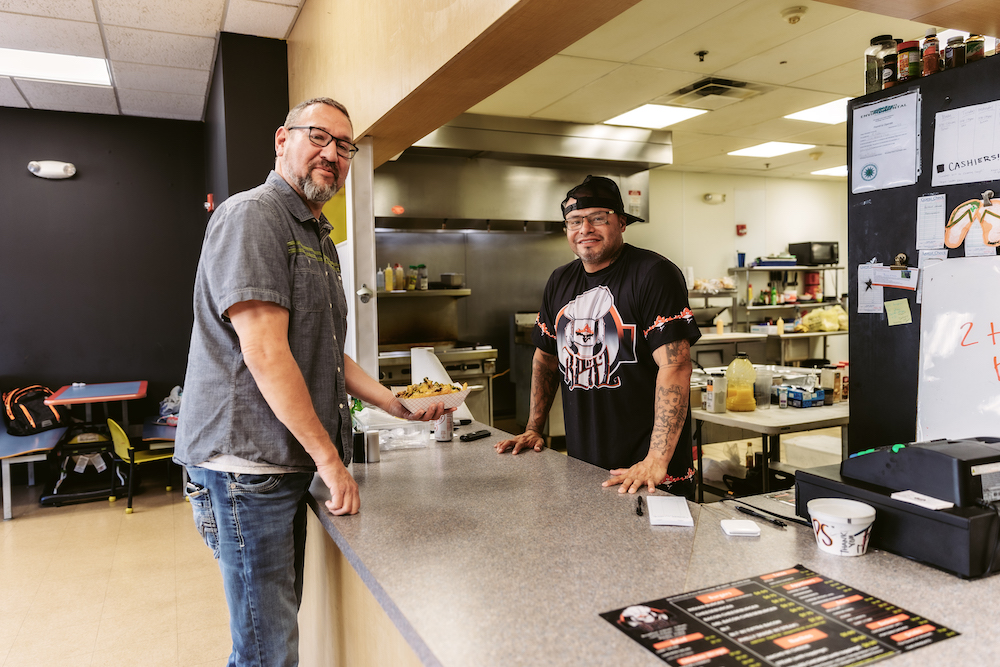
- Details
- By Brian Edwards
- Finance
Last week, I attended an annual summit in Washington, D.C., where community development financial institution (CDFI) leaders gathered to discuss their vision for expanding access to capital in Native communities.
The summit conversations were forward-looking but grounded in hard-won experience — after all, this is an industry that started with a handful of organizations in the early 2000s, when pioneers like Stewart Sarkozy-Banoczy and Ted Piccolo were “rubbing sticks together” to make payroll while facing a healthy amount of skepticism both inside and outside Indian Country.
“I can't tell you the number of tribal councils I talked to, who were like, ‘Yeah, I don't know if that's going to work here,’” Sarkozy-Banoczy, founding executive director of Four Bands Community Fund, told me on the phone. Mainstream financial leaders and non-Native economic players, he said, were even more dismissive, believing Native lending institutions were “crazy” and “could not happen.”
My conversation with Sarkozy-Banoczy took place on Friday, a couple days after unassuming philanthropist MacKenzie Scott revealed in a blog post that 30 Native CDFIs would receive more than $103 million in grant funding from her Yield Giving foundation. Her unrestricted funding to the Native CDFIs represents the largest single private investment ever made in these financial institutions. Several organizations received grants in the $10-13 million range, with additional amounts still undisclosed. As I spoke with people in the industry about the news, one word came up a lot: transformational.
“There's never been anything like this — this much, this fast, this focused — it's amazing,” said Piccolo, who was founding executive director of Northwest Native Development Fund about 20 years ago.
The timing of Ms. Scott’s funding is significant. Native CDFIs will play a key role in deploying $2 billion in clean energy funding to Indian Country through partnerships with Native-led and Native-serving organizations like the Native CDFI Network and Oweesta Corporation, along with other awardees under the Greenhouse Gas Reduction Fund programs. They will also help distribute more than $530 million in federal capital aimed at expanding small business opportunities in tribal communities through the State Small Business Credit Initiative.
Now Scott's unrestricted philanthropic investment provides these organizations with the capital they need to scale up for this expanded impact.
Pete Upton, CEO of Native CDFI Network, sees the transformational potential: “Native CDFIs operate on such razor-thin margins,” he said. “This gives the Native CDFIs and their boards the opportunity to sit back and strategically plan the next three to five years for long-term impact and sustainability.”
The impact is already taking shape. In Alaska, Spruce Root CDFI will use its $6 million grant from Scott to invest in a regional trust fund and support an innovative program combining business development with holistic wellness for Indigenous entrepreneurs.
“Our theory of change is that if we heavily invest in individual entrepreneurs, the ripple effects of those individuals becoming healthier and more productive will have direct impacts on the communities they live and operate in,” Alana Peterson, who is Tlingit and serves as executive director of Spruce Root, told one of our reporters on Friday.
These innovative approaches to community development exemplify how far the industry has come. In my three years covering Native CDFIs, I've watched an industry emerge. For someone like Sarkozy-Banoczy, who still serves on the board of Four Bands a quarter-century later, the industry’s evolution has been more profound.
“The numbers, the sophistication, the depth, products, loan products, development services, scope and capacity across the country is just incredible at this point,” Sarkozy-Banoczy said.
In my short time tracking the industry, I’ve come to learn that what makes these organizations special isn't just the work they do — it’s how they do it. These are institutions deeply embedded in their communities, combining cultural understanding with financial expertise. When making loans for small businesses or mortgages, they focus on character and determination, not just looking at credit scores. The results speak for themselves: Native CDFIs consistently show remarkably low delinquency rates while serving communities that mainstream financial institutions often overlook.
This matters because Native communities have historically received less than 0.5% of funding from large U.S. foundations, according to a study by Candid and Native Americans in Philanthropy. Scott's investment could help change that. It's not just the capital — it's a signal to other funders that Native CDFIs are ready for major investment because they’re very good at what they do.
“CDFIs leverage federal funds eight to one,” Native CDFI Network’s Upton said. “We're going to be able to leverage this (capital) tremendously, continue to grow the balance sheets of our Native CDFIs and keep building Native communities.”
Standing in that summit conference room last week, I could have predicted that this moment would come someday — just not this soon. But watching the Native CDFI movement evolve from those early days of rubbing sticks together to now managing huge federal awards and transformational private funding, one thing is clear: One of Indian Country's best-kept secrets is getting the recognition — and resources — it deserves.
